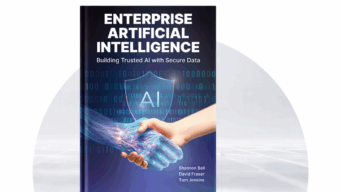Product information is the backbone of the manufacturing industry. Released product data, documents and drawings are of critical importance throughout the manufacturing value chain, from concept design to production to sales and service. But most of this critical information is trapped in siloed product lifecycle management (PLM) systems or distributed manually, making content difficult for stakeholders to access and lowering productivity.
To achieve efficient, agile operations, product information management needs to be easily shared and consumed across the manufacturing value chain, leveraged within the various bills of material (BOMs) used by departments across the organization.
Here’s how smarter information—and smarter product information management—can optimize your PLM.
What is product information management (PIM)?
Product information management (PIM) is the process of managing all the information about a product from a central location.
Today, manufacturing companies define, create and store vast amounts of product-related information, such as drawings, 3D models and specifications, in PLM systems. However, PLM systems aren’t built for information management. Additionally, PLM systems don’t easily integrate with tools such as ERP, MES and maintenance and services applications, which support different stages of the product lifecycle.
To deliver smarter product information management, organizations need solutions that bridge this gap by creating a digital thread to integrate product data into key business systems, making critical product information available to all downstream users.
What are the current challenges of product information management?
The information produced and managed by PLM systems is needed throughout the product lifecycle. Today, released product information is often stuck in a PLM system, making critical information difficult to access. As a result, many organizations rely on manual processes using paper, email or third-party file management systems to share this information. This leads to:
- Duplicated data
- Difficulty managing change requests
- Decreased quality management
In addition, product information is disconnected and spread across disparate systems with no digital thread. It’s estimated that knowledge-based employees, like those who drive manufacturing operations, spend up to 25% of their time searching for relevant information and content. Having multiple places to locate product information not only means that employees spend more time looking for the information they need, but it also leads many employees to download local copies of files, breaking the connection between the data they use and the original data sources. This results in reduced productivity and uncontrolled, unsecured copies that hinder quality management and put intellectual property at risk.
Change processes between product information and business information are also disconnected, which means issued changes may not be distributed to those who need it. This is a significant problem for manufacturers when handling change requests. If employees are working from outdated information, this can also cause critical mistakes, leading to expensive rework.
In addition, manufacturers are faced with challenges ensuring that data is accurate and current, maintaining process continuity and understanding relationships between business items.
Sound familiar? Learn how to solve these pressing challenges through smarter information.
What are the benefits of smarter information for manufacturers?
By integrating an enterprise content management (ECM) platform with your PLM system, you can deliver smarter product information management that creates a digital thread. This delivers a solution that allows manufacturers to create a seamless flow of information throughout the entire product lifecycle and enables better coordination and collaboration among various teams and departments involved in different stages of the product’s life. It can also ensure that lines of business get the information they need for their unique BOMs.
This kind of integration also enables manufacturers to be more agile and responsive to market demands. Feedback mechanisms reduce risk and keep information relevant and up-to-date. By connecting various systems, such as ERP, PLM, and MES, manufacturers can quickly adapt to changes in customer requirements, supply chain disruption, or design modifications, ensuring efficient production and delivery.
Other benefits include ensuring version control and traceability of all documents and content related to product information, as well as creating an audit trail of changes, approvals and revisions. This enhances regulatory compliance, facilitates audits and provides a comprehensive history of product-related information.
Smarter product information management with OpenText
OpenText™Digital Thread for PLM helps businesses build a digital thread that breaks down silos and speeds the delivery of timely and relevant product information across the organization. OpenText seamlessly integrates information into any workflow and application, ensuring users get the right information when and where they need it, boosting productivity and collaboration, simplifying processes and improving decision making.
Ready to master modern work in the manufacturing sector?
Get started with the Digital Thread for PLM.



